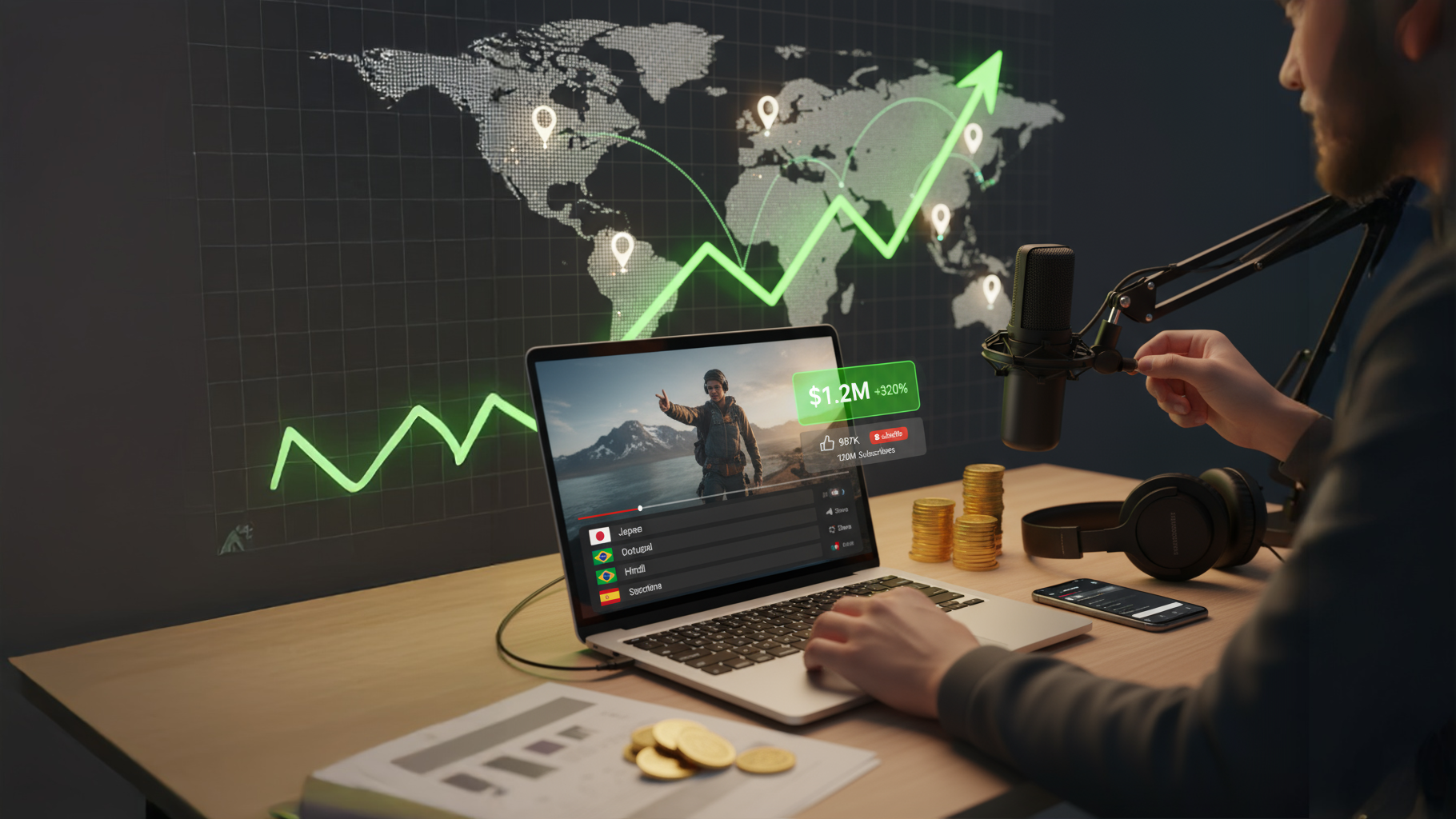While most creators are stuck fighting for views in English, smart creators have already figured out how to tap into audiences that are way less saturated, all while you're leaving millions of views on the table!
In this post, you'll learn exactly why top creators are using dubbed audio to blow up internationally, how to build a global YouTube channel, which languages to prioritize first, and why human dubbing beats AI every time.
Why Multi-Language Channels Win Globally
YouTube creators adding dubbed audio tracks are seeing 25% of their total watch time come from non-English viewers. That's not a small percentage; that's a quarter of your entire audience you didn't have before!
Real Creator Examples
Mark Rober dubs his videos in 30+ languages now and gained over 12 million subscribers in a single month after going multilingual.
Nick DiGiovanni chose human dubbing through Human Voice Over because our team delivered exactly what he needed: reasonably priced, high-quality dubbing that actually preserves personality across languages. His whole mission is making top-tier cooking content available to as many people as possible worldwide, and human dubbing made that possible in a way AI never could.
Ryan Trahan made the same call, partnering with Human Voice Over to dub his challenge videos into eight different languages.
And Finally, MrBeast. He saw this coming so early that he started his own dubbing company (Creator Global). When someone's investing that heavily in YouTube translation for creators, you know it's not just a trend.
YouTube's algorithm actively pushes dubbed content to international audiences now. Once you add Spanish audio, for example, YouTube starts serving that video to Spanish-speaking viewers globally. The platform literally connects the dots for you.
Steps to Build a Global YouTube Channel
Step 1: Start with your top-performing content
Don't dub your entire catalog day one; that's expensive and unnecessary. Look at your analytics. Which videos are already getting international views despite being English-only? Those are your candidates.
Step 2: Pick languages strategically based on data
YouTube Analytics shows you exactly where your current international viewers are coming from. If you're getting 500K views from Brazil but only posting in English, Portuguese should be your first dub.
Step 3: Decide between human dubbing and AI
YouTube's auto-dubbing feature uses Google's Gemini AI and is free, but it sounds robotic, sometimes mismatches voices, and can distort background audio. For global video localization that actually works, top creators use human voice actors. There's a reason MrBeast, Mark Rober, or any other top creator invests in professional dubbing. Your voice is your brand, and AI can't replicate that authenticity yet.
Step 4: Upload audio tracks through YouTube Studio
YouTube's multi-language audio feature lets you add different language tracks to any video (new or old) through the Subtitles Editor. The platform automatically serves the right language to viewers based on their location and preferences. No separate channels needed anymore.
Pro tip: YouTube Platform Specifics You Need to Know
YouTube now supports multi-language thumbnails too (currently in beta testing). This means you can customize thumbnail text for different languages, which boosts click-through rates in international markets.
Things Creators Ask Us
"Do I really need to dub in multiple languages if I'm just starting?" If you're under 100K subscribers, probably not yet. Focus on growing your English audience first. Once you're seeing consistent international views in your analytics (like 20%+ from non-English countries), that's your signal to start dubbing.
"Which languages should I prioritize for my YouTube global expansion tips?" Check your YouTube Analytics under Geography. Dub for the countries already watching your content. Spanish, Portuguese, and Hindi dominate for most creators, but you might have surprising pockets of viewers in specific regions.
Conclusion
Multiple-language YouTube channels aren't optional anymore if you want serious growth. The creators, seeing explosive international success, aren't smarter; they're just dubbing their content while others are still debating it.
YouTube's making this easier than ever with built-in multi-language audio features. The platform wants global content because it keeps viewers watching longer across more markets. You're pushing against the algorithm if you're only creating English-only content.
This is exactly why we focus on human dubbing quality at Human Voice Over. When creators come to us, they're usually past the experimental phase. They've tried AI dubbing, seen the disappointing results, and realized their audience deserves better. Professional voice actors who understand cultural nuances and can match your energy are exactly what moves the needle.
YouTube is global. Your voice should be too. We help the world’s biggest channels dominate new markets with high-quality, personality-driven human dubbing. Visit our website humanvoiceover.com, and turn untapped countries into loyal subscribers!
